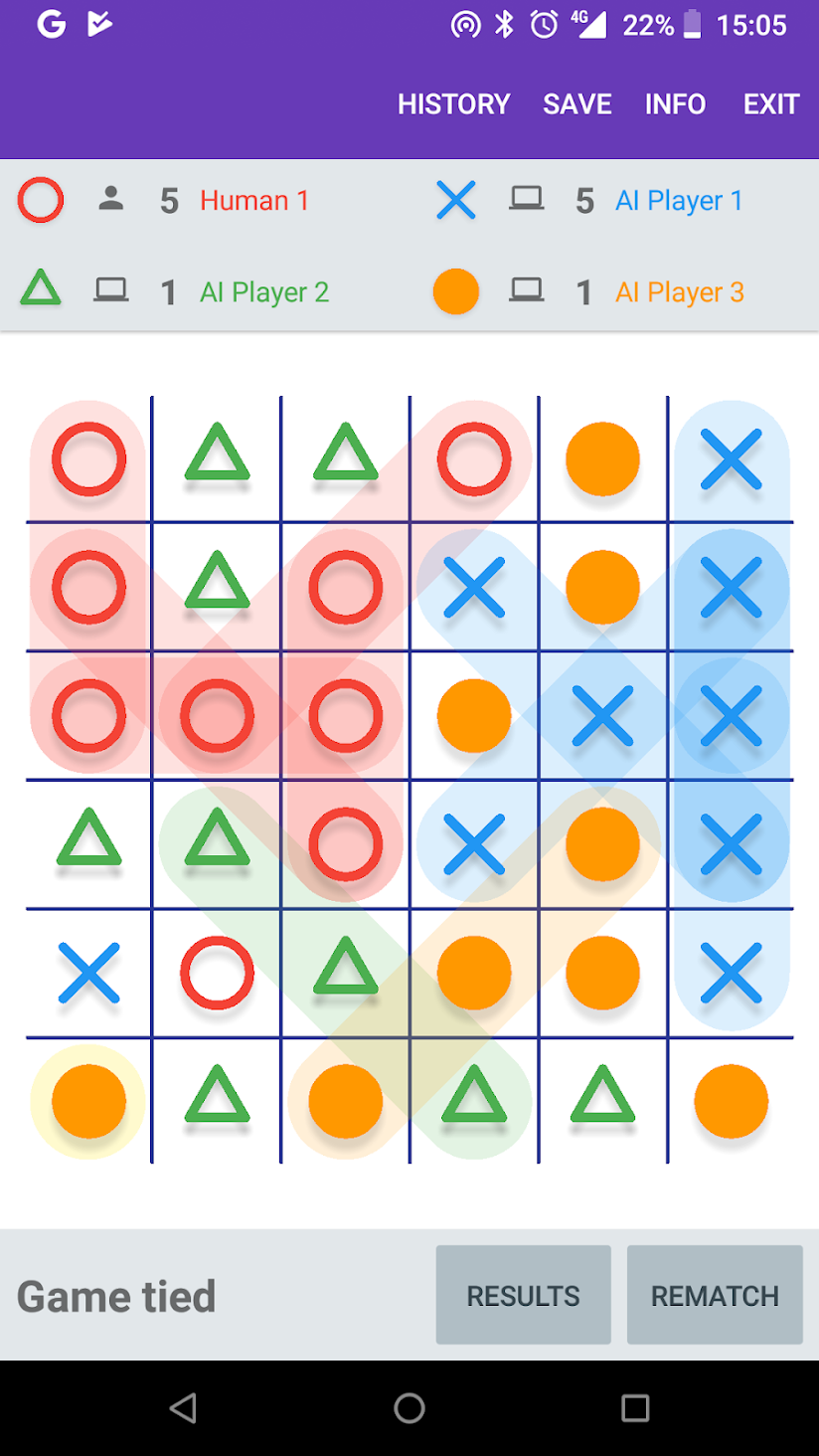
One of the key things I want to achieve with Tic-tac-toe Collection is fun game modes for more than two players. There are some obstacles to overcome.
The first, surprisingly enough, is how to refer to it. My first instinct is “multiplayer”, but when used in the context of, say, an app store description for a tic-tac-toe game, that just sounds like two player (and probably implies over the internet).
The second is more interesting. There is not a lot of information about tic-tac-toe-like games with more than two players. In fact, in academia in general, there is very little about any kind of game with more than two players.
If you look at the Wikipedia page for Tic-tac-toe, Connect Four or Gomoku (or Chess or Backgammon for that matter) there are sections about the mathematics of the game. Does one of the players have an advantage? Is the game “solved”? If you take the most well known similar game I can think of that regularly has more than two players, Chinese checkers, there is nothing of the sort.
So I figured I would just make something up, and see what happened. My first attempt is the Rumble game mode. This is a tic-tac-toe variant with two key differences, a larger board, and a point-per-line (playing until the game is full with the highest score winning). The larger board was the first step, since 3×3 is already a forced draw for two players and more would just make it worse. The point-per-line idea came about since with a larger board, it was still too easy for the first player to get a line.
That is to say, it is normally too easy for the first player to get a line, but not always. And it is for the same reason as why games with more than two players are taken less seriously - the possibility of collusion changes things drastically. If one of the players is not playing to win, it is very difficult to determine a useful strategy. Despite that, there is one multiplayer game that is taken seriously that features this as a mechanic: Diplomacy.


